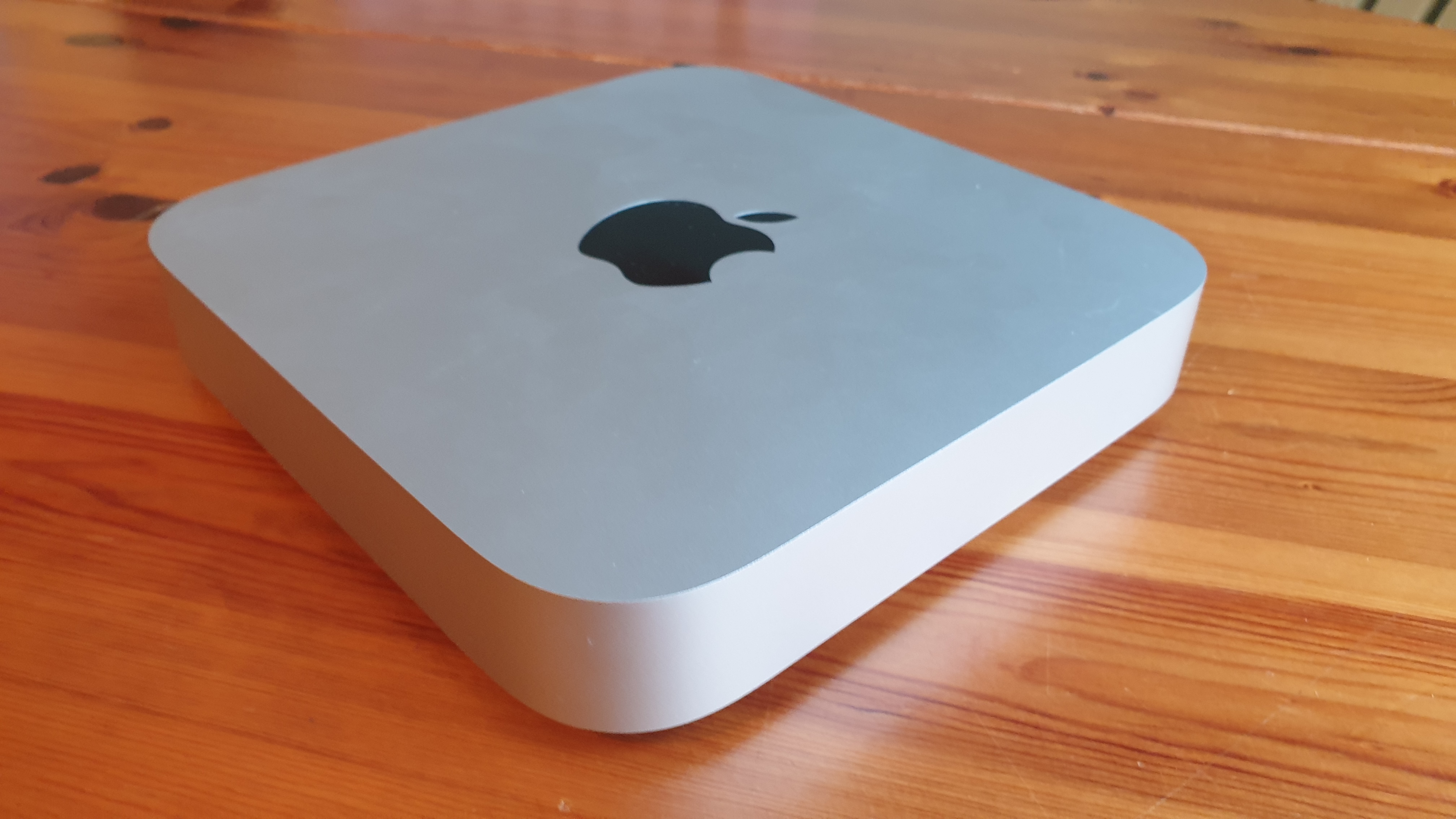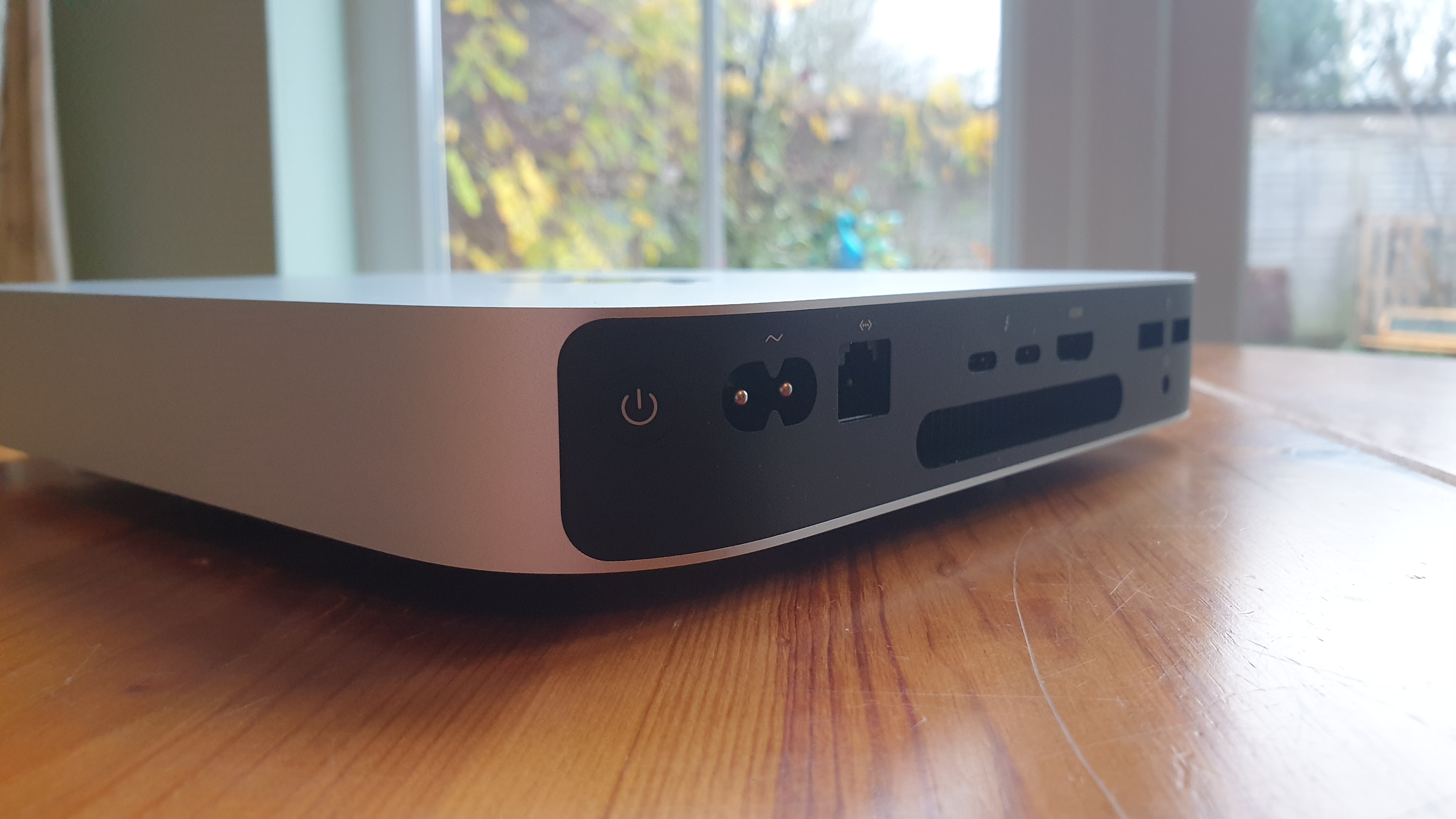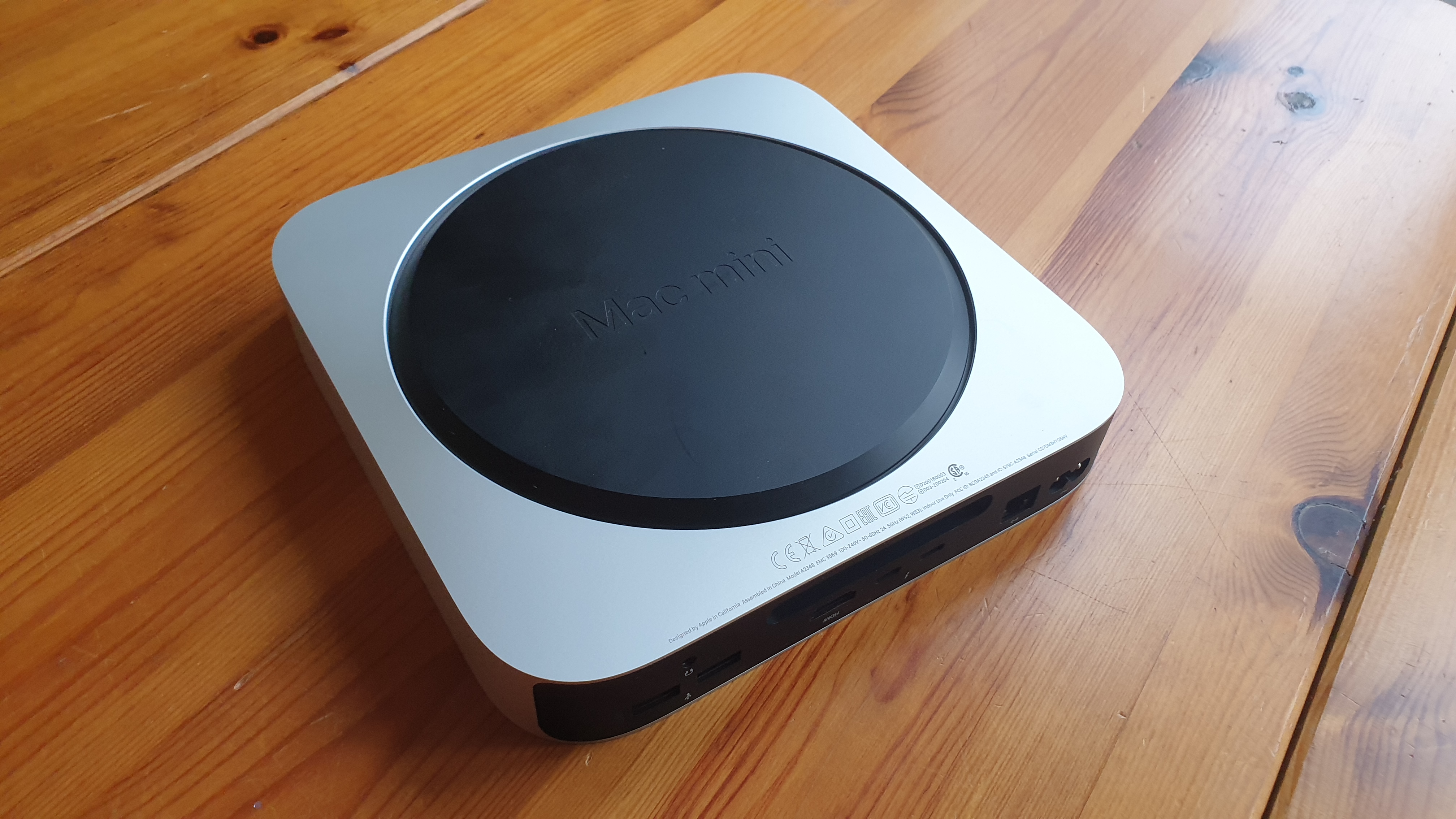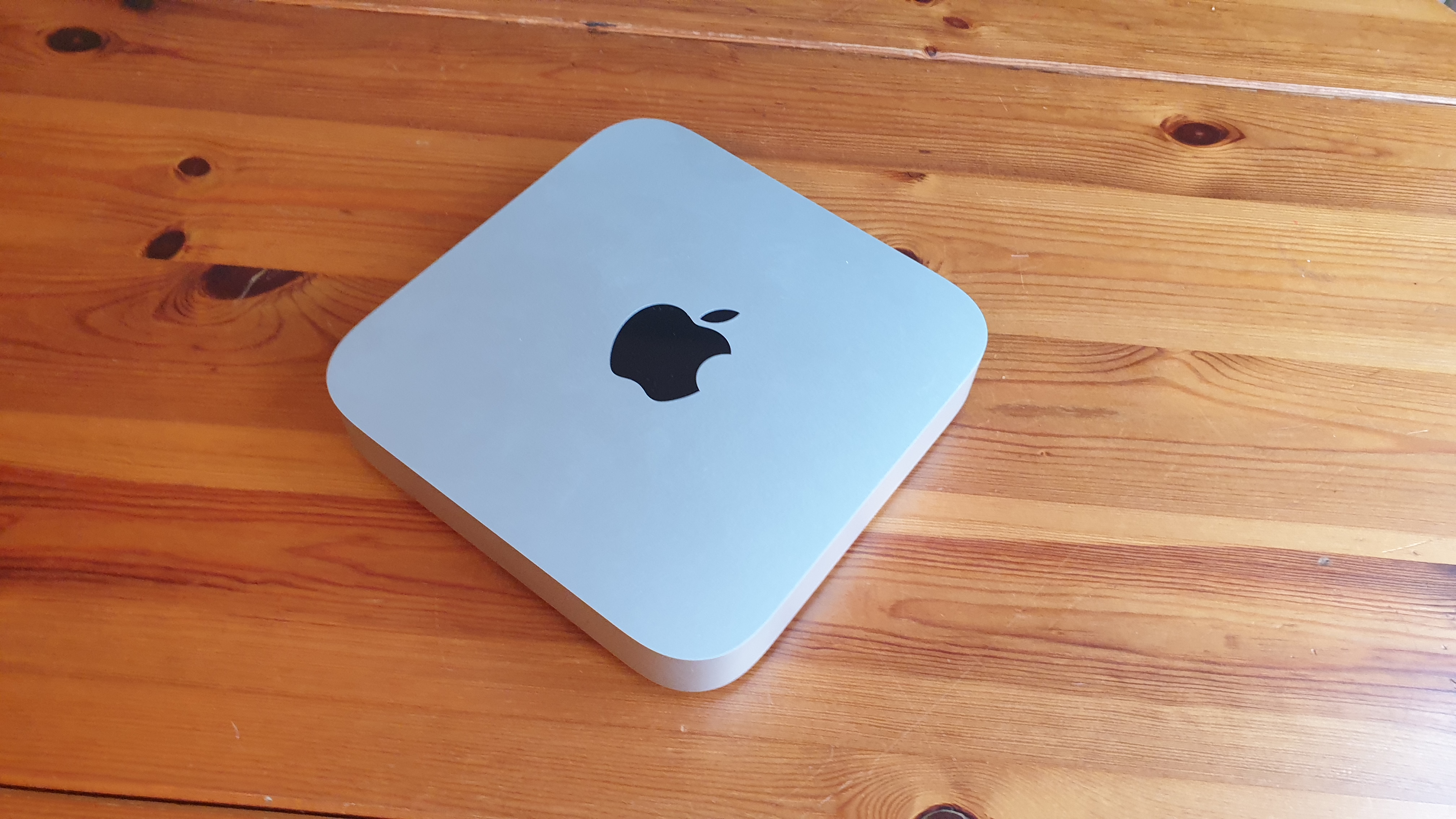Our Verdict
The Mac mini (M1, 2020) is easily one of the best small form factor PCs creatives can buy. If you don’t have the budget for, or need the power of, a Mac Pro, then this is a brilliant alternative.
For
- Compact design
- Great performance
- Runs macOS and apps well
Against
- Can’t use eGPUs
- Maximum amount of RAM is 16GB
Why you can trust Creative Bloq
The new Mac mini (M1, 2020) is easily one of the best compact PCs creatives can buy. Not only is this a beautifully designed little computer that can easily sit unobtrusively in any home, office or studio, but thanks to Apple’s new M1 chip (which replaces the Intel CPU and integrated graphics of previous models), it’s an incredibly competent machine as well, which will handle most complex creative workloads with ease.
We’ve always been fans of the Mac mini (see our pick of the best computers for graphic design – an affordable and tiny PC with Apple’s trademark build quality, what’s not to love?), so we were incredibly pleased to see Apple release a new version, especially one that features Apple’s brand new M1 chip. The fact that Apple chose the Mac mini to be its first desktop Mac to showcase the M1 chip (rather than an iMac or Mac Pro), is great to see. It’s a real show of confidence from Apple in its quirky little machine.
It’s not perfect, but compared to small Windows– or Linux– based small form factor PCs, it crushes the competition when it comes to style, price and performance.

Mac mini (M1, 2020) review: Price
Apart from its design and performance, the price of the Mac mini (M1, 2020) is its most impressive aspect. Starting at just £699 for the model with 8GB of RAM and 256GB of storage, this is by far the cheapest entry point into the Mac ecosystem. The fact that it comes with the brand new macOS Big Sur operating system, and the same Apple M1 chip that powers the far more expensive MacBook Pro 13-inch (M1, 2020), means that despite its low price, you’re not getting too many compromises at all.
Perhaps best of all, this entry-level model is actually £100 cheaper than the previous model with an Intel chip. So, you’re getting newer hardware for less. That’s a great move by Apple, and one we heartily commend.
You can also get a pre-configured model with 8GB of RAM and 512GB storage (and the same M1 chip) for £899, and you can configure the Mac mini to offer up to 16GB of RAM and 2TB of storage.
Meanwhile, compact PCs like the Intel NUC series are slightly cheaper, but they are barebones systems, which means you need to buy and install hard drives and RAM (plus an operating system) as well. This is an additional cost, and is added complexity. With the Mac mini, you can just plug it in and use it straight away.
However, we should note that because of the new M1 chip, RAM is limited to 16GB, and there’s no way to open up the device to add a larger hard drive (or more RAM). While this won’t be a concern for a lot of people, if you like the idea of upgrading your PC yourself after a while to keep it performing well, the new Mac mini isn’t for you.
Mac mini (M1, 2020) review: Power and performance
As we’ve mentioned in our reviews of the new MacBook Air (M1, 2020) and MacBook Pro 13-inch (M1, 2020), we’ve been incredibly impressed with the performance of Apple’s M1 chip. Combining both a CPU and GPU, it handles complex tasks, including graphical ones such as 3D rendering and video editing, with ease.
So, we fired up Final Cut Pro and editing some 8K video footage, and the Mac mini handled it incredibly well. We were seriously impressed with the performance we were seeing with such a small – and affordable – device. It also remained completely silent as we worked. This means you could hide it behind a monitor or TV and pretty much forget that it was there.
The M1 chip in the Mac mini features an 8-core CPU and 8-core GPU, which is the same as in the new MacBook Pro 13-inch, and so we saw very similar performance in both machines, backed up by synthetic benchmarks we ran as well.
This is pretty impressive stuff, considering the MacBook Pro 13-inch costs around twice as much as the Mac mini at £1,299. The fact you’re getting the same level of performance in the Mac mini is a real testament to Apple’s engineering of the Mac mini. Of course, you don’t get a screen with the Mac mini, or a keyboard and mouse, and it’s not as easily portable as the MacBook Pro laptop (there’s no battery so you always need to plug it in), but for video editors or content creators who want MacBook Pro-level performance in a much more affordable package, the new Mac mini won’t disappoint.

One thing we should point out is that while the new Mac mini comes with the same range of ports as previous models (Ethernet LAN, two Thunderbolt ports, HDMI, two USB and an audio jack), you cannot use an external GPU with the new Mac mini.
This is a bit of a blow, to be honest. Previous versions of the Mac mini could get a serious power boost by connecting an external graphics card (eGPU) to the PC, making them incredibly powerful mini workstations.
While the new Mac mini’s performance is still very impressive, the lack of eGPU support means you don’t have that flexibility, which will disappoint anyone who wanted to do some really intensive graphics work on the device. And, if you’ve already got an eGPU, it means you won’t be able to use it with this new model.
The new Mac mini (M1, 2020), comes with macOS Big Sur installed, which is the latest Mac operating system from Apple. It’s been given a big overhaul, and runs brilliantly on the new Mac mini (and looks fantastic as well, thanks to its new user interface, which is stylish and modern, while still feeling familiar for anyone who has used previous versions of macOS).
Best of all, Big Sur on the Mac mini can run pretty much any Mac app, either natively for apps made for the M1 chip, or via Apple’s Rosetta 2 tool, which makes apps made for Intel-based Macs compatible with the M1 hardware.
It’s pretty seamless, and it means if you have a favourite app that you use on an older Mac, you should be able to run it on the new Mac mini without any problems.
Even better, you can now run iOS apps for iPhones and iPads on the Mac mini (M1, 2020), thanks to the M1 chip being similar to the chip in Apple’s smartphones and tablets. This allows you to access thousands of brilliant apps and games, and while they have been initially designed for mobile devices with touchscreens, many of them work brilliantly on the mac Mini with a mouse and keyboard.

Mac mini (M1, 2020) review: Key features
In our view, the biggest selling point of the Mac mini (M1, 2020) is just how small it is. At 36 x 19.7 x 19.7cm, the Mac mini really is a stunningly compact bit of kit. As you’d expect from Apple, it looks lovely (and comes in a new Silver colour), but if you want to keep it out of sight, you really wouldn’t have an issue.
This means for anyone with limited space, or who wants a PC that doesn’t spoil the aesthetics of your home or studio, the Mac mini really is a fantastic choice. And, while there are other small PCs out there, none of them have the same level of style and sophistication as the Mac mini.
The new Mac mini can now also support up to two ultra high definition displays as well. You can plug a monitor with up to 6K resolution and a refresh rate of 60Hz into the PC via Thunderbold, as well as use the HDMI port to connect to a 4K screen at 60Hz as well.
This is another excellent example of how powerful and versatile the Mac mini is.
Should you buy it?
If you’re after a small, easy to store, PC that can be hidden away and remain completely silent, whilst still offering fantastic value, then the Mac mini (M1, 2020) is an easy recommendation. It really is beautifully designed, and the M1 chip inside allows it to keep up with some of the most demanding creative tasks we threw at it.
For people working in small spaces, then, this is a brilliant buy. The same can be said if you want to make the switch to a Mac, but have been put off by the high prices of the iMac all-in-one PCs, or the MacBook laptops. The Mac mini is brilliantly priced, and allows you to access the same apps, software and in many cases performance, as those much more expensive Mac devices.
However, if you need a real powerhouse of a workstation, then you’ll want to get something with a discrete graphics card. The loss of eGPU compatibility is a real disappointment here.
And, if you’re often working on the road, then a laptop may be a better bet, though by PC standards, this is still a very portable device.
Finally, if you like to have the ability to upgrade your PC in the future to help it keep up with changing demands, then you’re not going to want a Mac mini – or any Apple product for that matter. You’d be much better off with a mini PC from Intel or Zotac. Less stylish and glamorous, sure, but far more flexible.

Thank you for reading 5 articles this month* Join now for unlimited access
Enjoy your first month for just £1 / $1 / €1
*Read 5 free articles per month without a subscription

Join now for unlimited access
Try first month for just £1 / $1 / €1
out of 10
The Mac mini (M1, 2020) is easily one of the best small form factor PCs creatives can buy. If you don’t have the budget for, or need the power of, a Mac Pro, then this is a brilliant alternative.

Matt has been a technology journalist for over 15 years, writing for publications such as T3, MacFormat and Creative Bloq. He's a managing editor of TechRadar, Creative Bloq's sister site, where he can be found writing about and reviewing laptops, computers, monitors and more. He often writes for Creative Bloq, helping creatives find their perfect laptop or PC.

